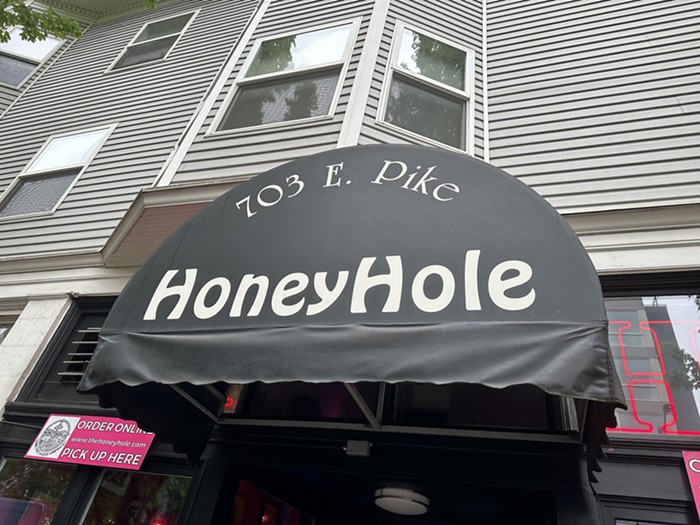
In the heat of the debate over a new tax on large businesses to fund housing and homelessness services, the Seattle Times covered a new report that showed just how great the financial need for the crisis is. The answer: $400 million a year, or about double what Seattle and King County currently spend.
While a consulting firm wrote the report, it was affiliated with the Seattle Metropolitan Chamber of Commerce, who vehemently fought the business tax. With results that contradicted the Chamber's arguments, the report became a huge talking point in the tax debate. (A Chamber spokesperson says the consulting firm contacted the Chamber about being its pro bono client for the report.) But the Times did not post a copy of the full report itself. The consulting firm that wrote it, McKinsey & Company, has ignored multiple requests for a copy of the report or to discuss its findings. The firm has posted this summary online. The Stranger has since obtained a copy of a “discussion document” laying out more details of the report. You can read it here.
The document largely reiterates things you already know if you’ve been following the issue, though it offers some more specifics.
A lack of affordable housing supply, among other issues, contributes to a bottleneck at shelters and other emergency services. That means those services are overloaded. Also, moving people through the system and into housing is slow and inefficient. While 22,000 households experiencing homelessness need affordable housing units, there are only 8,000 units available, leaving a gap of 14,000 units. (Some specific numbers in the document are clearly sourced, while others are not. The firm used city, county, state, and federal data as well as interviews with providers and housing experts.)
The report identifies the most cost-effective homelessness investment as rental assistance at about $12,000 per unit. The “optimal” strategy, though, is building or buying units of affordable housing, which ranges from $277,000 to $344,000 per unit. (To get these figures, the report cites data from the census, Dupre + Scott Apartment Advisors, King County, the City of Seattle, the state legislature, and the U.S. Department of Housing and Urban Development.)
In total, the report identifies the total need as $200 million to house the 21,700 households who were experiencing homelessness in 2017 “using near-term, cost-effective strategies such as subsidies.”
The document repeatedly emphasizes the shortage of affordable housing units. Since 2014, housing units in King County that are affordable to higher income residents have increased 10 percent, while the number of units affordable to lower income residents has decreased by 13 percent. (Higher income here means 80 percent of area median income or $64,800 for a family of three; lower income means below 50 percent of median income or $43,200 for a family of three). The report says Seattle’s Housing Affordability and Livability Agenda (HALA) plans will still leave a significant gap in affordable housing.
If every already existing building in King County with more than 100 units contributed one of those units as affordable, the region could house 1,500 households for the cost of $3.9 million per year. Because each building would only be setting aside one unit, that could happen “without significantly impacting profitability,” the report says. The region could also improve the number of people exiting emergency shelter into housing by spending $70,000 per year each on housing navigators. Navigators could place 100 clients per year, the report says, citing interviews with providers.
Read the full document here.
The headline of this post has been updated to reflect that the report was not written by the Chamber of Commerce.


















